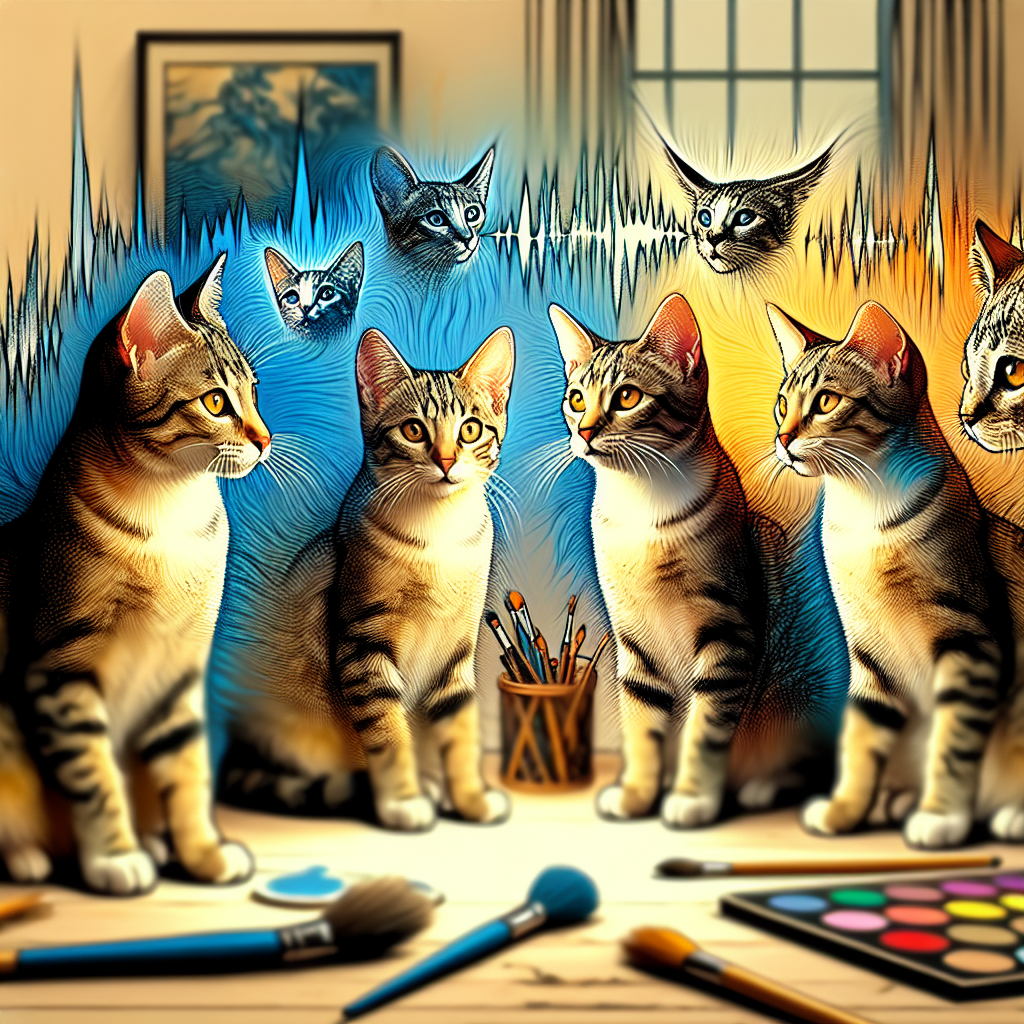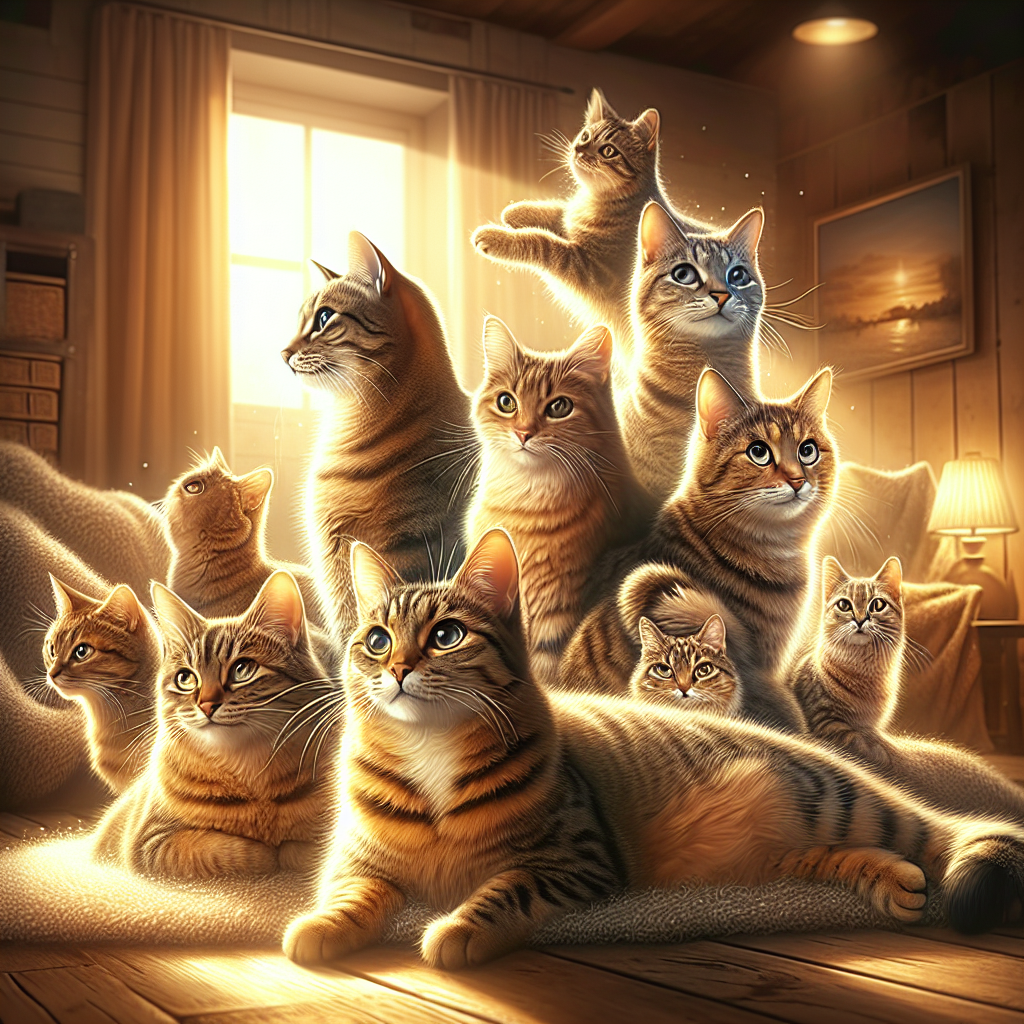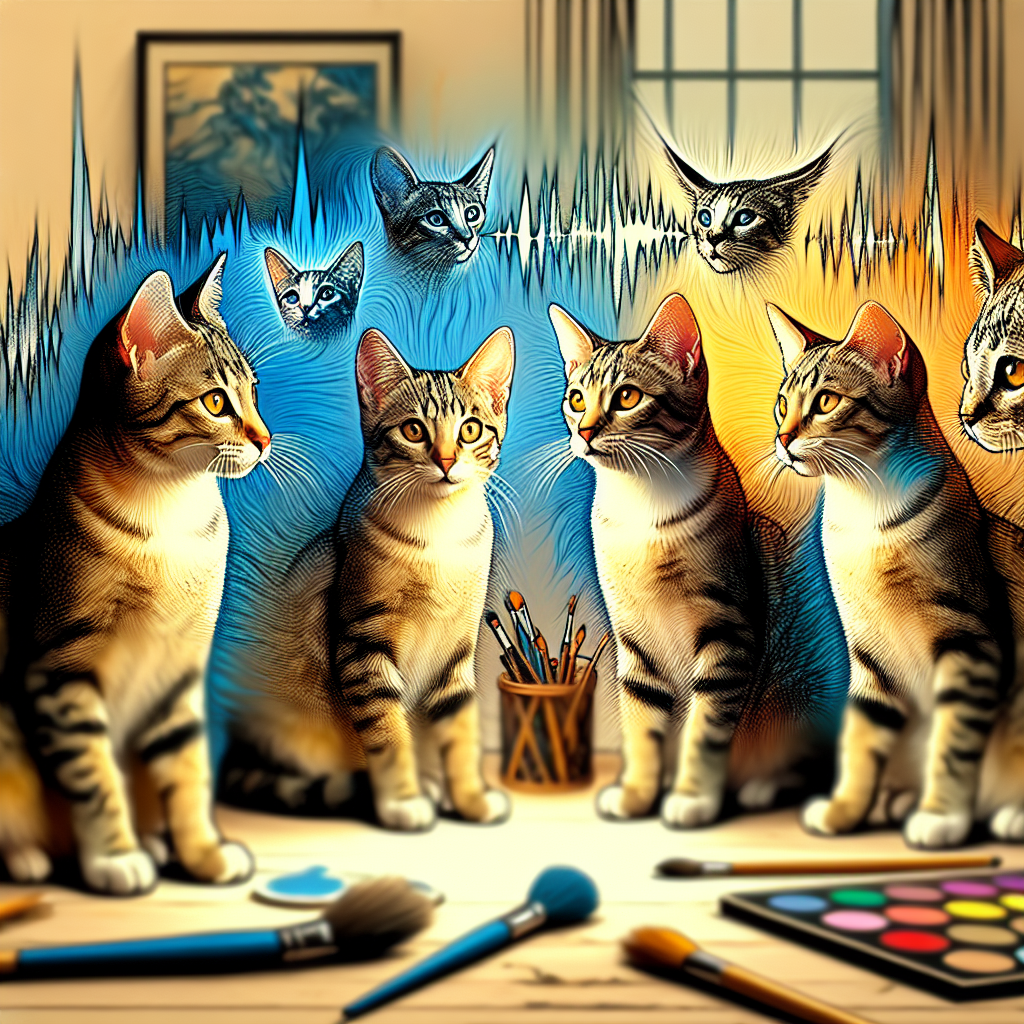When it comes to feline companions, tabby cats stand out for their charming and talkative nature. These delightful creatures are known for their ability to engage you in conversation, making them the perfect companions for those seeking a lively and interactive pet. With their unique patterns and distinctive meows, tabby cats have captured the hearts of many cat lovers worldwide. In this article, we will explore the reasons behind their chatty personality and uncover the fascinating world of tabby cat communication. Get ready to be captivated by the witty banter of these adorable chatterboxes!

Physical Characteristics of Tabby Cats
Coat Patterns
Tabby cats are known for their unique coat patterns. Their fur is usually adorned with beautiful stripes, spots, or swirls in various colors such as brown, gray, and orange. The most common tabby pattern is known as the “classic” or “marbled” tabby, which features bold, swirling stripes on the cat’s body. Other patterns include the “mackerel” tabby, characterized by narrow, parallel stripes, and the “spotted” tabby, where the stripes are broken into spots.
Eye Colors
Tabby cats can have a wide range of eye colors, including green, amber, yellow, and even blue. The color of their eyes is determined by genetics and can vary from cat to cat. Some tabbies have heterochromatic eyes, which means each eye is a different color. This unique eye color adds to the charm and individuality of these talkative felines.
Body Size
On average, tabby cats have a medium-sized body with a muscular build. However, there can be variations in their size depending on factors such as genetics, diet, and overall health. Male tabbies tend to be larger and heavier than females. Their physique and size provide them with the agility and athleticism needed to engage in playful activities and explore their surroundings.
Personality Traits of Tabby Cats
Social and Friendly Nature
Tabby cats are known for their sociable and friendly nature. They often enjoy the company of their human companions and are quite comfortable in social settings. These cats thrive on attention and are often eager to interact with people, making them wonderful companions and family pets. Their friendly nature also extends to other animals, as they are known to be tolerant and accepting of other pets in the household.
Curiosity and Playfulness
One of the most endearing traits of tabby cats is their curiosity and playfulness. These cats have an innate sense of adventure and are always ready to explore their surroundings. Whether it’s chasing after a feather toy or investigating every nook and cranny of their territory, tabbies love to engage in playtime and keep themselves entertained. Their natural curiosity ensures that they never have a dull moment, both for themselves and their human companions.
Attention-Seeking Behavior
Tabby cats are known to be quite vocal and expressive when it comes to seeking attention. They may engage in various behaviors, such as rubbing against your legs, pawing at you, or meowing loudly, to get your attention. These attention-seeking behaviors are often a way for tabby cats to communicate their desire for interaction and affection. They thrive on human companionship and enjoy being the center of attention in their households.
Communication Methods Used by Tabby Cats
Meowing
One of the most common forms of communication used by tabby cats is meowing. They use different types of meows to convey various messages such as hunger, attention-seeking, or simply greeting their human companions. The tone, duration, and pitch of their meows can provide valuable insights into their needs and emotions.
Purring
Purring is another communication method used by tabby cats. It is often associated with contentment, relaxation, and a sense of well-being. Cats purr to not only express their satisfaction but also to soothe themselves and others around them. It’s a comforting sound that can create a sense of calm and happiness in both cats and humans.
Chirping
Tabby cats are known for their unique chirping sound, which is a combination of a meow and a trill. This vocalization is often associated with excitement or anticipation, especially when they spot something interesting or engaging. Chirping is their way of expressing curiosity, enthusiasm, and eagerness to interact with their surroundings.
Hissing
While not exclusive to tabby cats, hissing is a vocalization commonly used by cats when they feel threatened or scared. It is their way of warning potential predators or other cats to back off. Tabby cats may hiss if they feel cornered or if they are in a situation that makes them uncomfortable. It’s important to respect their boundaries when they display this behavior and give them space until they feel safe again.
Reasons Behind Tabby Cats’ Talkative Behavior
Natural Instincts
Tabby cats, like most cats, have an innate need to communicate. Their talkative behavior stems from their instincts to establish and maintain social bonds. By vocalizing, they can convey their feelings, needs, and intentions to their human companions, as well as communicate with other cats.
Bonding and Affection
Tabby cats are social creatures and seek affectionate bonds with their human companions. Their talkative nature can be seen as an attempt to establish a closer connection and strengthen the bond. By vocalizing, they create opportunities for interaction and demonstrate their desire for emotional closeness.
Requesting Attention or Interaction
Another reason behind tabby cats’ talkative behavior is their desire for attention or interaction. They may meow or purr to get their owner’s attention, whether it’s to be fed, played with, or simply to engage in some quality time together. Talking is their way of initiating communication and getting the response they desire.
Expressing Feelings and Emotional State
Tabby cats may vocalize to express their emotions such as happiness, frustration, or discomfort. By meowing, chirping, or even hissing, they are letting their human companions know how they feel and what they need in a particular situation. It’s important to pay attention to their vocalizations to better understand and respond to their emotional state.

The Influence of Genetics on Tabby Cats’ Communication
Heredity and Genetic Background
Genetics play a significant role in the development of a tabby cat’s physical characteristics and personality traits, including their communication style. Certain genes can determine the vocalization patterns and tendencies of a tabby cat, making them naturally more talkative or expressive.
Link Between Vocalization and Specific Genes
Studies have suggested that there may be a link between specific genes and the vocalization behavior of tabby cats. Certain genetic mutations can contribute to increased vocalizations or unique vocal patterns. However, more research is still needed to fully understand the genetic factors influencing a tabby cat’s communication style.
Environmental Factors Affecting Tabby Cats’ Talkativeness
Socialization and Upbringing
The socialization and upbringing of a tabby cat can have a significant impact on their talkativeness. Cats that have been properly socialized from a young age, introduced to various people, animals, and environments, are more likely to develop confident and communicative personalities. On the other hand, cats that have had limited socialization may be more reserved or less vocal.
Owner’s Communication Style
The communication style of a tabby cat’s owner can also influence their talkativeness. Cats often mirror the behaviors and communication patterns of their human companions. If an owner engages in frequent conversation with their cat and responds positively to their vocalizations, the cat may become more talkative as a result.
Stress and Anxiety
Stress and anxiety can affect a tabby cat’s communication behavior. Cats may become more vocal when they are feeling anxious or overwhelmed, using their meows as a way to seek comfort or reassurance. It’s important to create a calm and safe environment for tabbies, providing them with the support they need to reduce their stress levels.
Dispelling Myths About Tabby Cats Being Talkative
Individual Personality Variation
While tabby cats, as a breed, are generally known to be talkative, it is essential to recognize that individual personality variations exist. Just like humans, each cat has a unique personality and may exhibit different levels of vocalization even within the same breed. Some tabbies may be more reserved and less talkative, while others may be more gregarious and chatty.
Misinterpretation of Vocalizations
Sometimes, the talkative behavior of tabby cats can be misunderstood or misinterpreted by their owners. Certain vocalizations that may seem excessive or annoying to humans are actually normal feline communication. It’s important to differentiate between attention-seeking meows and genuine distress signals to better understand a tabby cat’s needs and emotions.
Other Breeds with Talkative Traits
While tabby cats are often associated with being talkative, it’s worth mentioning that other cat breeds can also exhibit talkative traits. For example, Siamese cats are known for their vocal nature and are often considered one of the most talkative breeds. It’s not solely limited to tabbies, but rather a characteristic that can be found across various breeds and individual cats.
Ways to Understand and Communicate with a Talkative Tabby Cat
Active Listening and Observation
To effectively understand and communicate with a talkative tabby cat, active listening and observation are key. Pay attention to their vocalizations, body language, and accompanying behaviors to gather insights into their needs and emotions. By being attentive and responsive, you can form a stronger bond with your tabby and ensure their well-being.
Interpreting Different Vocalizations
Every meow, chirp, or purr from a tabby cat can have a different meaning. Take the time to understand the specific vocalizations your cat uses in different situations. For example, a high-pitched, repetitive meow may indicate hunger, while a low, deep purr might mean contentment. By interpreting their vocalizations, you can better respond and cater to their specific needs.
Responding with Appropriate Body Language
Tabby cats not only communicate through vocalizations but also through body language. When interacting with your talkative tabby, respond with appropriate body language to enhance communication. For example, gentle petting or slow blinks can convey affection and reassurance, while abrupt movements or tense postures can be interpreted as threatening or intimidating.
Establishing Communication Routines
Building communication routines with your talkative tabby can strengthen your bond and provide them with the comfort of consistency. Set aside specific times each day for dedicated playtime, grooming sessions, or simply sitting together quietly. By establishing regular communication routines, you create a sense of predictability and security for your tabby.
Tips for Managing Excessive Vocalization in Tabby Cats
Identifying Underlying Health Issues
Excessive vocalization in tabby cats can sometimes be a sign of underlying health issues. If your tabby’s talkativeness suddenly increases or becomes excessive, it’s essential to consult a veterinarian to rule out any medical conditions. Pain, discomfort, or other health problems might be causing the excessive vocalization, and addressing the root cause can help manage it effectively.
Providing Sufficient Mental and Physical Stimulation
Tabby cats thrive when they have ample mental and physical stimulation. Engage in interactive play sessions, provide toys and puzzle feeders, and create an enriching environment for them to explore. Keeping their minds and bodies active and engaged can prevent boredom and help reduce excessive vocalization caused by pent-up energy.
Maintaining a Consistent Daily Routine
Tabby cats appreciate routines and predictability in their daily lives. Establish a consistent daily routine for feeding, playtime, and quiet time to create a sense of stability and security. By providing a structured environment, you can help alleviate any stress or anxiety that might contribute to excessive vocalization.
Positive Reinforcement Training
Positive reinforcement training can be a useful tool in managing excessive vocalization in tabby cats. Rewarding desired behaviors and ignoring or redirecting undesired vocalizations can help create a more peaceful and harmonious living environment. Always remember to reward your tabby for their quiet moments and provide positive reinforcement when they communicate appropriately.
Final Thoughts
Tabby cats are beloved for their talkative nature, unique personalities, and stunning coat patterns. While their vocalizations may sometimes seem excessive, it’s important to appreciate and understand that communication is a vital part of their feline nature. By actively listening, observing, and responding to their vocal and non-verbal cues, you can form a deeper bond with your talkative tabby and create a harmonious relationship that brings joy to both of your lives.

